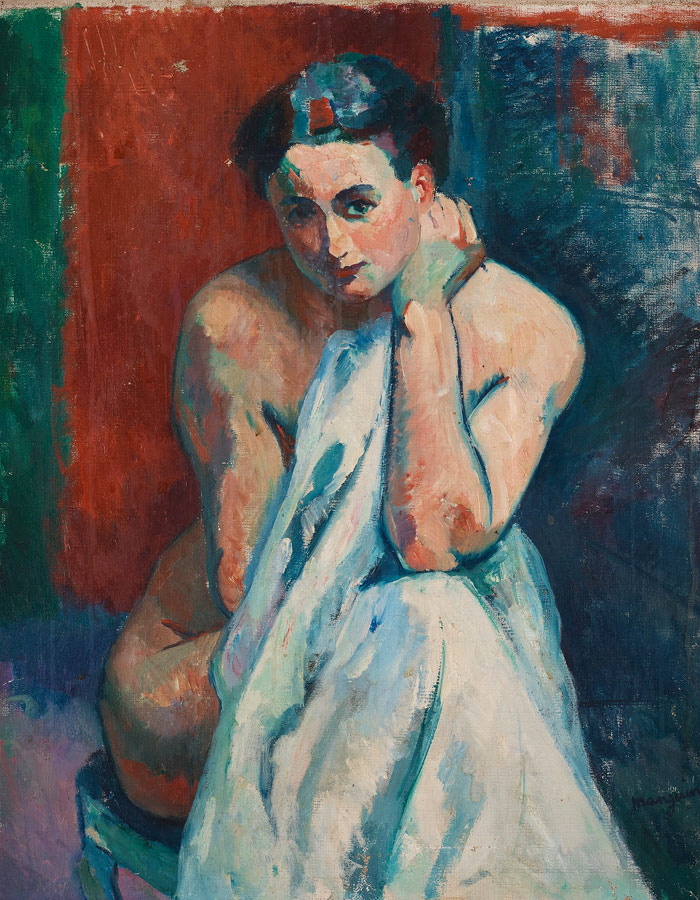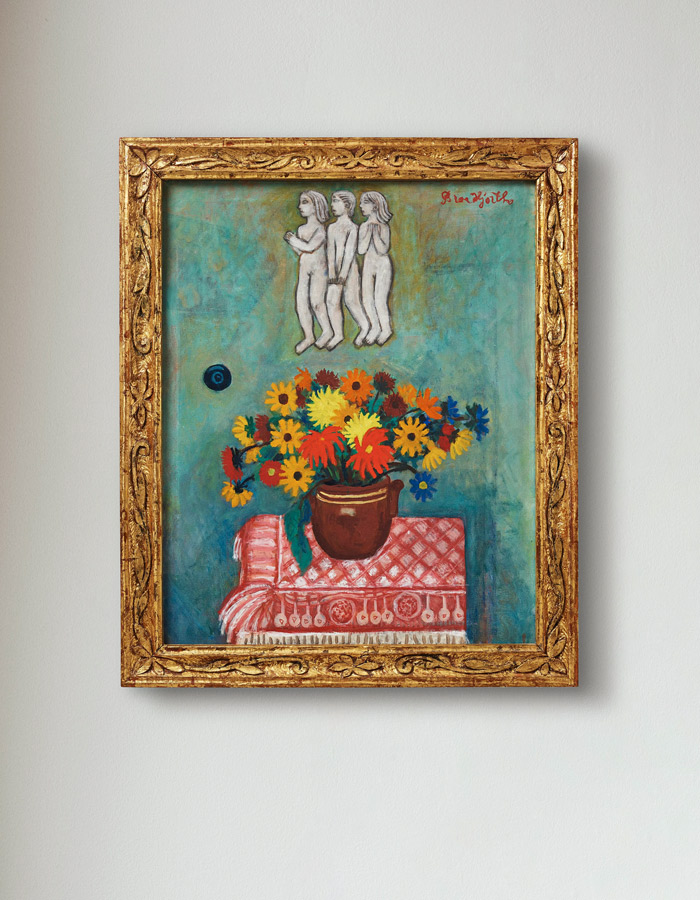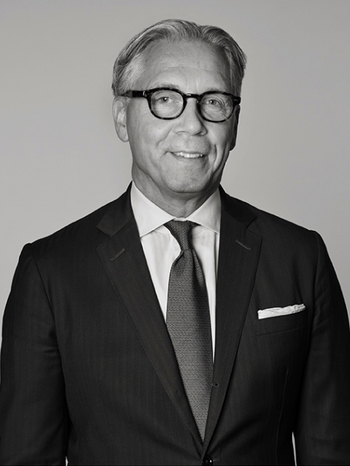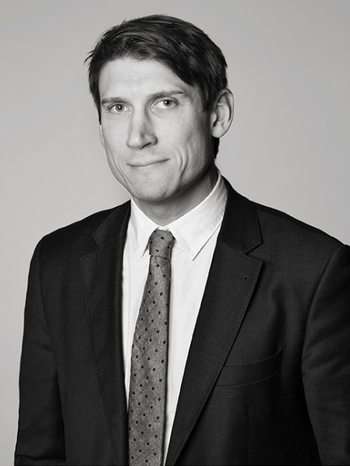Modern Art + Design – Lena Rydén lists art favourites
The Specialist's choice Lena Rydén
We have spoken with Lena Rydén, Head of Art, Specialist Modern and 19th century Art, who talks about the selection at this spring's Modern Art + Design. She also takes the opportunity to list some of her favourite objects among the substantial selection of Swedish and international modern art at this season's auction.
What can we look forward to in this spring's Modern Art + Design auction?
– This spring's Modern Art + Design auction includes several avant-garde works by artists who reshaped art history in the early twentieth century and paved the way for modern art, such as GAN and Isaac Grünewald. Bukowskis has sold many collections over the years. This time we have been entrusted to sell the Dillberg collection, which primarily consists of works by the Halmstad Group, and the Wahlstrøms collection, featuring international art. The provenance behind a collection adds an invaluable extra dimension and magic to the artworks.
Browse our web catalogue and welcome to visit the viewing. Don't hesitate to email me if you have any questions.
When is the viewing and auction?
Viewing: May 11 – 15, Berzelii Park 1, Stockholm
Open: Weekdays 11 am – 6 pm, Weekends 11 am – 4 pm
Live Auktion: May 16 – 17, Arsenalsgatan 2, Stockholm
Read more about the auction and view the catalogue

Gösta Adrian-Nilsson, "Snälltåg/Schnellzug", 1915
Matisse came to have great significance for many Swedish artists who travelled to Paris in the early 1910s. Gösta Adrian-Nilsson, known as GAN, instead travelled to Berlin, where he encountered German Expressionism and Italian Futurism at the legendary gallery Der Sturm. He transformed these impressions in Sweden and referred to himself as a "cubofuturist." "Snälltåg/Schnellzug" is a fantastic avant-garde work created as early as 1915. The express train races forward at full speed in an explosion of light, darkness, color, and form. The painting is a tribute to the contemporary belief in the positive possibilities of technology to improve society.
"Snälltåg/Schnellzug" was acquired by Yngve Andrén, an art enthusiast in Tomelilla, as early as 1917 and has been in the family's possession ever since. It is always an exceptional privilege to sell a work that has been cherished for generations.
Till the work

Henri Manguin, Portrait of the artist's wife Jeanne, 1903–04
Henri Matisse is considered one of the most significant figures of expressionism or fauvism, another expression of this art movement. Less well-known is Henri Manguin, who, together with the fauvist leaders André Derain and Henri Matisse, was a central figure in the movement at the beginning of the 20th century. The auction's portrait of the artist's wife, Jeanne, is an early and vital work executed in 1903-04 before his friend and colleague Henri Matisse painted his famous "Femme au chapeau" in 1905. It is fantastic to feel the wings of art history in a painting created during such a groundbreaking time.
To the work

Carl Kylberg, "På stranden, Kylbergshus"/"Le Rivage", 1940
Carl Kylberg, as an artist, is a personal favourite. He followed his own path and is an artist who has significantly impacted, among others, the Gothenburg colourists. Kylberg touches upon profound existential subjects from a universal perspective in his art. He often paints on large canvases using a dry-on-dry technique that gives the colours a vibrant, suggestive effect. "På stranden, Kylbergshus" / "Le Rivage" was created in 1940, a period when Kylberg produced several of his finest paintings. I recommend everyone to attend the exhibition, stand in front of this painting, open their minds, and allow themselves to be drawn into Kylberg's magical universe.
To the work

Bror Hjorth, "Blommor och elektrisk kontakt", 1946
Seeing artists who effortlessly navigate between different artistic expressions is always fascinating. When Bror Hjorth travelled to Paris in 1921, it was to further his education as a sculptor under Antoine Bourdelle. Painting mainly was a hobby for him. Later on, he started combining these two genres in various ways by sculpting and painting his frames for his paintings and adding paint to his sculptures. When he settled in Uppsala after his years abroad, he realized that one doesn't need to travel far to make great discoveries. The grandeur can be found in the small things around us. In the painting "Blommor och elektrisk kontakt" (Flowers and Electric Contact), he combines the grand and the small—a fantastic still life of flowers flanked by a classical element in the form of a relief with three figures and a regular electric contact. This is the greatness of good art—it allows us to see things from new perspectives.
To the work

Torsten Renqvist, "Fågelskrämman"
When it comes to art, one often thinks of it as a two-dimensional painting hanging on a wall. Fortunately, three-dimensional art in the form of sculpture has become increasingly popular. It occupies space in the room and encourages touch, providing a tactile experience. Torsten Renqvist's "Fågelskrämman" (Scarecrow) is inspired by a child's drawing and scarecrows Renqvist encountered during his trip to Poland in 1966. The scarecrow is portrayed more as a friend to the birds, despite its intended purpose of scaring them away. Renqvist often experimented with different materials in his sculptures, unlike anyone else's, to evoke new expressions.
To the work

Contact our Specialists

Stockholm
Lena Rydén
Head of Art, Specialist Modern and 19th century Art
+46 (0)707 78 35 71

Stockholm
Andreas Rydén
Head Specialist, Art, Deputy Managing Director
+46 (0)728 58 71 39

Stockholm
Björn Extergren
Head of Consignment and Sales Department, Fine Art. Specialist Antique Furniture, Decorative Arts and Asian Ceramics
+46 (0)706 40 28 61






























